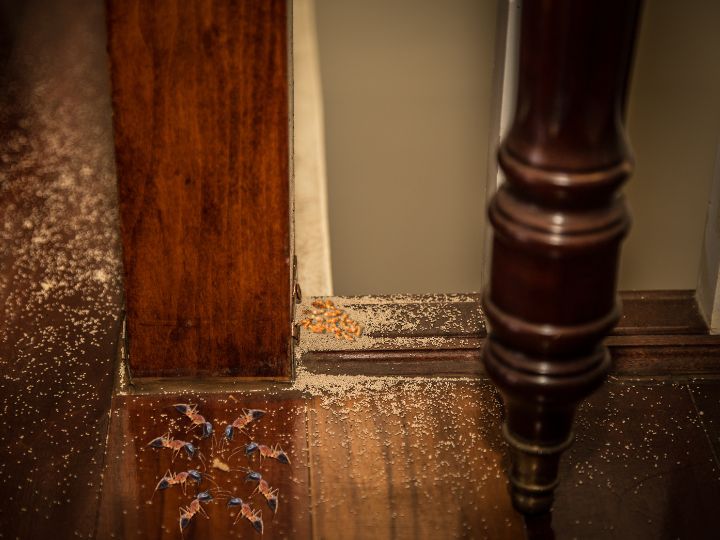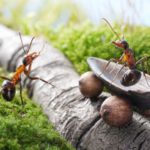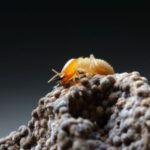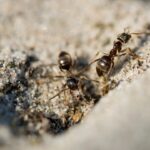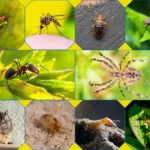Termites and carpenter ants do more than just damage to homes. When they have an outbreak, they also leave behind frass, which is a mess of droppings and feces that look like sawdust or wood shavings. When insects infest your building or home, these also have bug waste or pieces of wood. It can be hard to tell the difference between each bug because they all look pretty much the same, but there are other ways to help you figure out which insect is causing the problem.
Termites and carpenter ants are both insects that can damage wood, but they do so in very different ways and have different habits. Carpenter ant termite droppings are often a source of misunderstanding. Based on their droppings, you can tell the difference between carpenter ants and termites. Stay tuned to insectinsider to find out more about ants and termites.
Table of contents
- Carpenter Ant Droppings
- Composition of Carpenter Ant Droppings
- Termite Droppings
- Getting rid of carpenter ant termite droppings
- Comparison of carpenter ant termite droppings
- How carpenter ant termite droppings are formed?
- Warning signs: carpenter ant termite droppings
- Frequently Asked Questions (FAQs) about Carpenter ant termite droppings
Carpenter Ant Droppings
Termites leave behind droppings that are very clear and regular, while carpenter ant droppings, also called frass, are not. Unlike termites, carpenter ants don’t eat wood for food. Instead, they make galleries and holes in wood to build their nests. Because of this, carpenter ant frass isn’t always easy to spot, but when it is, it generally includes:

Appearance
Smaller pieces of wood and other junk make up Frass, which is another name for carpenter ant droppings.
Color
Carpenter ant droppings aren’t always the same colour, but it’s usually close to the colour of the wood they drill into.
Consistency
The waste that carpenter ants leave behind is not in the form of pellets but can look like sawdust or wood shavings.
Carpenter ant droppings can look different based on the type of wood they are tunneling through and how they set up the nest. It is important to remember that frass (carpenter ant droppings) may not be enough proof to prove a carpenter ant infestation. Water damage or other pests may cause wood debris.
Composition of Carpenter Ant Droppings
Wood Shavings
Carpenter ants push sawdust and pieces of wood out of their nests, making small piles of wood shavings near where they build.

Insect Parts
Frass may have insect parts that the carpenter ants have thrown away, like wings or exoskeletons.
Dead Ants
If carpenter ants die in their homes, the frass may contain their bodies.
Termite Droppings
Termite frass, which are termite droppings, are easy to spot and can help you figure out if you have a termite problem. Even though different types of termites may make slightly different types of frass, termite droppings usually look like this.

Appearance
Termite frass which are small hard balls are termite droppings.
Color
A lot of the time, termite droppings are all the same colour, like dark brown or black. They can look like pepper or sawdust.
Consistency
Termite droppings are more solid and pellet-like than carpenter ant frass, which looks like crushed or fibrous wood.
Pellet-like structure
There are a lot of small, hard pellets that termites leave behind. Most of the time, these pieces are all the same size and shape.
Location
Termites often use small holes near the affected wood to push their waste out. Termite droppings may be near these holes. Termite droppings and carpenter ant droppings are not the same thing. Termite droppings are clear pellets, while carpenter ant droppings look more like wood shavings and other junk.
Talking to a pest control professional is the best way to be sure that you have carpenter ants or termites and to correctly identify their droppings. They can look at your property, figure out what kind of pest is causing the problem, and suggest the best way to get rid of it and keep it from coming back.
Getting rid of carpenter ant termite droppings
Even though carpenter ant termite droppings aren’t as dangerous as other pests’ droppings, you should still be extra careful when you clean it up. They leave behind frass that you can clean up by cleaning the area and wiping it down with a paper towel. Remember to wear protected gear like masks and gloves to prevent viruses from entering your lungs. Also, furniture or other things that have been damaged by frass should be checked to see if they can be fixed or if they need to be replaced.

Comparison of carpenter ant termite droppings
The table below briefly lists the differences between carpenter and termite droppings.
| Comparison | Carpenter ant droppings | Termite droppings |
| Magnitude | Compared to termite droppings, it is bigger and less even. | Not as big as carpenter ant droppings and more polished in size |
| Color | Similar to light-colored wood chips | Tan and brown in different shades |
| Form | Like bits of wood | Pellets in the shape of an oval with long ends and six flat sides. |
| Droppings location | Near open nests | Near or under the nests or in the woods filled with them |

How carpenter ant termite droppings are formed?
Now we will discuss what makes up carpenter ant termite droppings. Underground termites can search for food for as far as a football ground, going from one hole to another. They have to climb up to get into a house, but if they can’t find wood that touches the ground, they build mud tubes on the basement walls. Carpenter ants live in the ground and come up to a house to eat. They don’t need water to make mud tubes, though.
You should not ignore these mud tubes because they are very important danger signs. Check for tunneling in crawl spaces, under decks and stairs, behind bushes, on the inside and outside walls of your basement, and on the inside walls of your house. Also, you should know that subterranean termites can damage your home’s wood if it hits the ground in certain places. This damage often looks like it was done by a hundred cutting knives. You may find this kind of damage in damp and shady parts of your home.
Warning signs: carpenter ant termite droppings
Here are some of the warning signs of carpenter ant termite droppings:
- Presence of ants themselves, are generally brown or black
- Mostly found in the kitchen or bathroom where there is water available
- Reproductive ants usually appear after rains.
- Carpenter ants generally come out in the daytime
- If you find sawdust in your home, that’s carpenter ant droppings
- Tiny pin holes in the wood
- Rusting noises from walls and ceilings
If you notice any of these signs, you have an active carpenter ant termite droppings problem. You should seek professional help to get rid of them.
Frequently Asked Questions (FAQs) about Carpenter ant termite droppings
Are termite droppings harmful?
Termite poop is not dangerous by itself, but you should not handle it without first talking to an expert. Even though dry wood termite droppings don’t really pose a health or safety risk, you shouldn’t clean them up on your own or without the help of a professional.
Q1. Do carpenter ants leave poop?
Carpenter ants: Feces make up termite droppings. Ant droppings are soft, just like you loosely pack flexible pieces of wood and feces. Ant droppings are usually in slit-like holes in the wood near where the ants live.
Q2. How do you identify ant droppings?
What Does Ant Poop Look Like? This is a clear difference between ants and termites: termites leave behind droppings and “frass.” Since ants eat other ants, their waste often contains pieces and parts of other ants. Together with the wood shavings, dirt, and waste, this makes their droppings chunkier than termites’.
Q3. What should I do if I see termite droppings?
You probably won’t see any signs of dry wood or damp wood termites because they live inside the wood they eat. The only things you might see are a swarm of them or droppings under broken wood. If you see any signs of termites, you should call a professional termite control service to talk about your treatment choices.
Q4. What is the difference between carpenter ant termite droppings (poop)?
What’s the difference between carpenter ant termite droppings? The biggest difference between these two insects’ frass is their composition. Insect wasters make up both carpenter ant termite droppings, but termite frass doesn’t have any insect parts in it.

